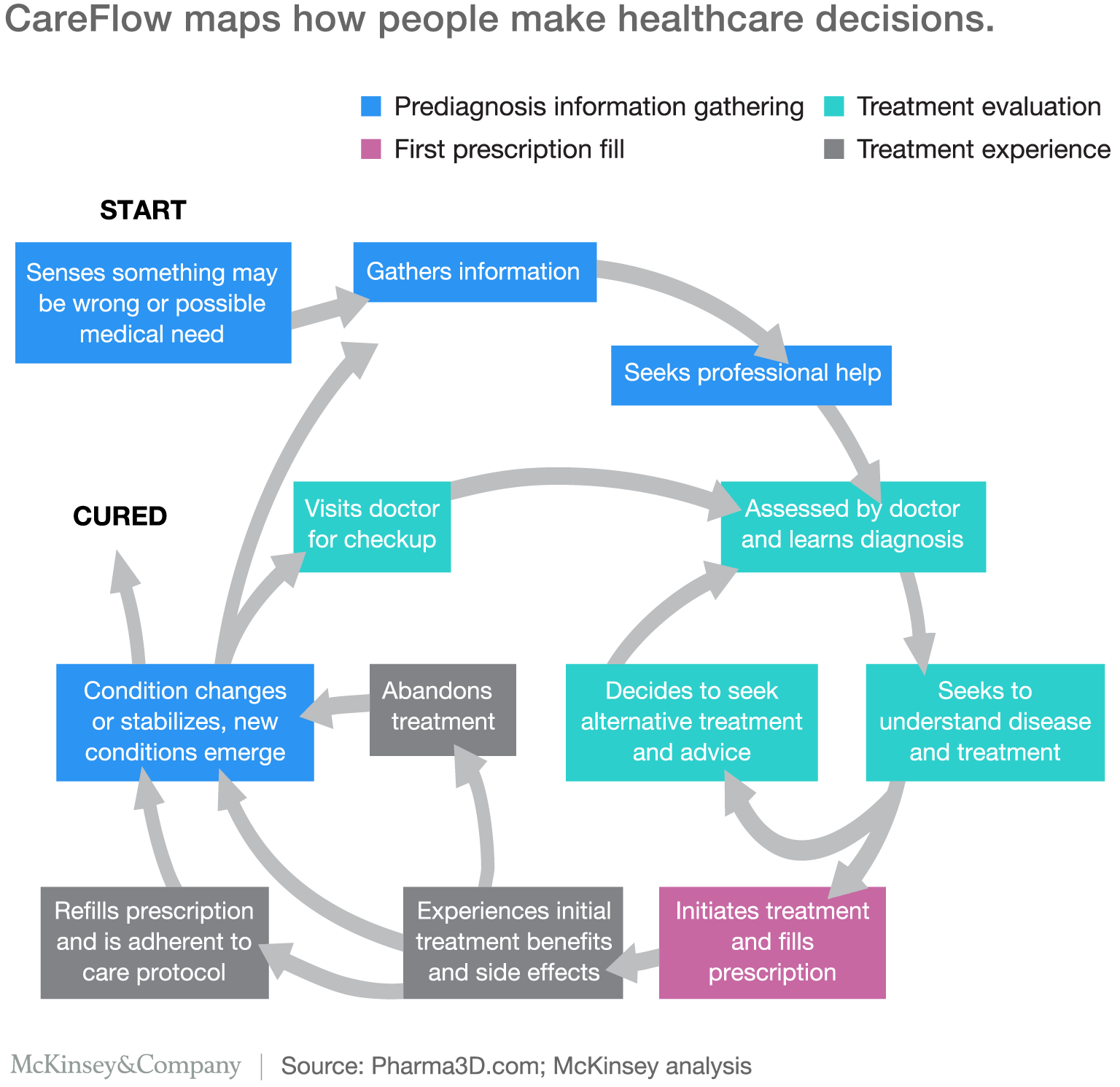A prescription for the pharmaceutical industry
Pharma’s blockbuster launches have trained marketing’s smooth muscle memory. Brands like Prozac, Plavix, Lipitor and Viagra exploded under a frequency model that combined strong sales forces with iconic advertising campaigns and forests of printed collateral to create fame. These brands reached icon status and entered the bloodstream of popular culture and created a recipe for the Golden Age for pharma marketers. However, as Jeremy Bullmore has pointed out, there’s something in the nature of real fame that means it needs to be indiscriminate. And with new products focused on narrower and narrower indications and new immunotherapies focusing on narrower and narrower populations, this model is revealing its limitations. More crucially, it’s at odds with today’s healthcare consumer/patient: an empowered digital citizen and rational optimizing individual who has evolved antibodies to mass marketing’s brute force, ubiquity and interruption.
Pharma is fortunate to be able to learn from other sectors (e.g., retail, travel, financial services). These sectors have already accepted the truth of customer control and ridden out the first waves of the experience revolution. These companies are making CX a cultural competency and employing frameworks that maximize customer portfolio value and LTV across the customer lifecycle. We call this convergence “CXRM,” and for modern pharma it means maximizing human outcomes and business outcomes through targeted management of experiences across marketing, service delivery and health engagement.
Understand patient experience ecosystems
Patients use a myriad of touch points to discover, explore, buy and engage with healthcare products and services. It’s essential to zoom out to map key actors and actions by mapping the pre-diagnosis and therapeutic journeys for key segments. It’s only by understanding the holistic picture that we can determine where, when, and how to inflect. Focus on identifying patient needs at key inflections and then developing a customer experience roadmap based on needs. Then create a marketing plan that delivers on the roadmap across micro-experiences and shared experiences.
The patient experience ecosystem as recently depicted by a group of pharma marketing experts from Wharton, Google and McKinsey, called “CareFlow.”

Focus on engagement, not just promotion.
Engagement is the new grail. It harnesses the precious resource of attention, engenders trust, and unlocks data to create yet more meaningful engagement. Engagement results in better health outcomes, higher retention rates and lifetime values, and lower costs. Brands boost engagement by forming trusting relationships with patients, accomplished by personalizing interactions, understanding and serving patient communities and by creating compelling stories and experiences. Yesterday’s patient was content to passively receive promotional information from the brand. No more. They’ll seek out information from peers and bring their individual motivations for managing risk, care and control to the party.
Tell 325 million stories
If pharma companies want to truly encourage changes in health behavior, they’ll need to go beyond broad and vast campaigns to bring within view things on a first-person, human scale. Consider Keytruda. 
Receiving a cancer diagnosis is devastating and overwhelming. The patient is instantly hurled into a complex and complicated world. Although supported by a healthcare team and a care circle, the infinite number of treatment options, opinions, past experience, stories, rumors, everything on the web, etc. there is almost too much information. The one thing that patients with cancer want more than anything is truth and more than anyone they want to hear it from other patients just like them.
Keytruda breaks the mold with a creative campaign focused on real patients. Telling their stories. Talking about their experiences with dignity, courage and generosity. Sharing personal family struggles. And telling the world their truths. These patients and their families became the living proof of Keytruda’s efficacy and that living longer was in fact possible.
Accelerate digital capabilities
Traditional pharma operating models can be inhibitors to digital acceleration. Solving for X means continuously testing new channels, measuring results, and adapting commercial activities based on the new learning. We recommend an approach that starts first with key opt-in platforms and channels in your marketing ecosystem, a focus on key moments and inflection points, and a progression through MVPs to progressively higher tiers of personalization performance using an agile test-and-learn approach.
Orchestrate investment across the model
Last, best estimates of pure waste in healthcare are somewhere between 20 percent and 30 percent. Pharma marketers can save large amounts of money by reallocating investments to new, digital channels. Modern “adaptive” ROI techniques organize the marketing ecosystem to give marketer visibility into — and the ability to orchestrate across — spend, agencies, and the patient journey. They assess marketing’s synergistic impact at all phases of the consumer journey in a way that’s holistic and aligned with business objectives using new techniques and computing power.
Rinse. Repeat. Adapt.
There’s a new Golden Age, where pharmas are far more than vast impersonal forces, and patients are more than passive recipients of therapies. For us, it’s a place where patient outcomes drive business outcomes and marketing is the enabler and a channel of constant improvement.




